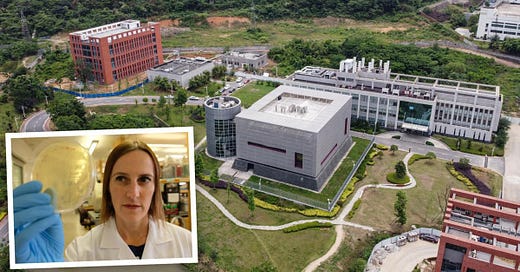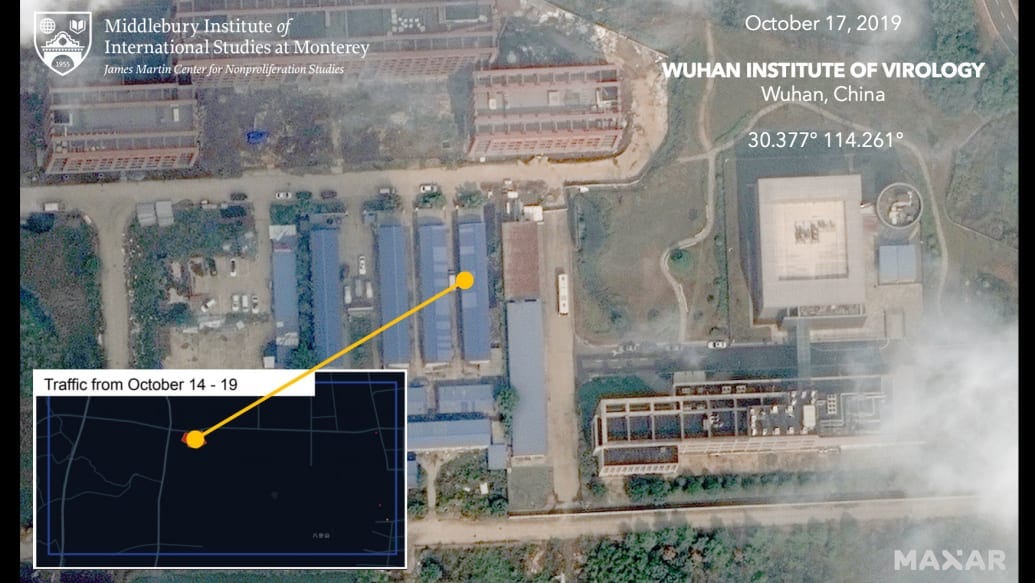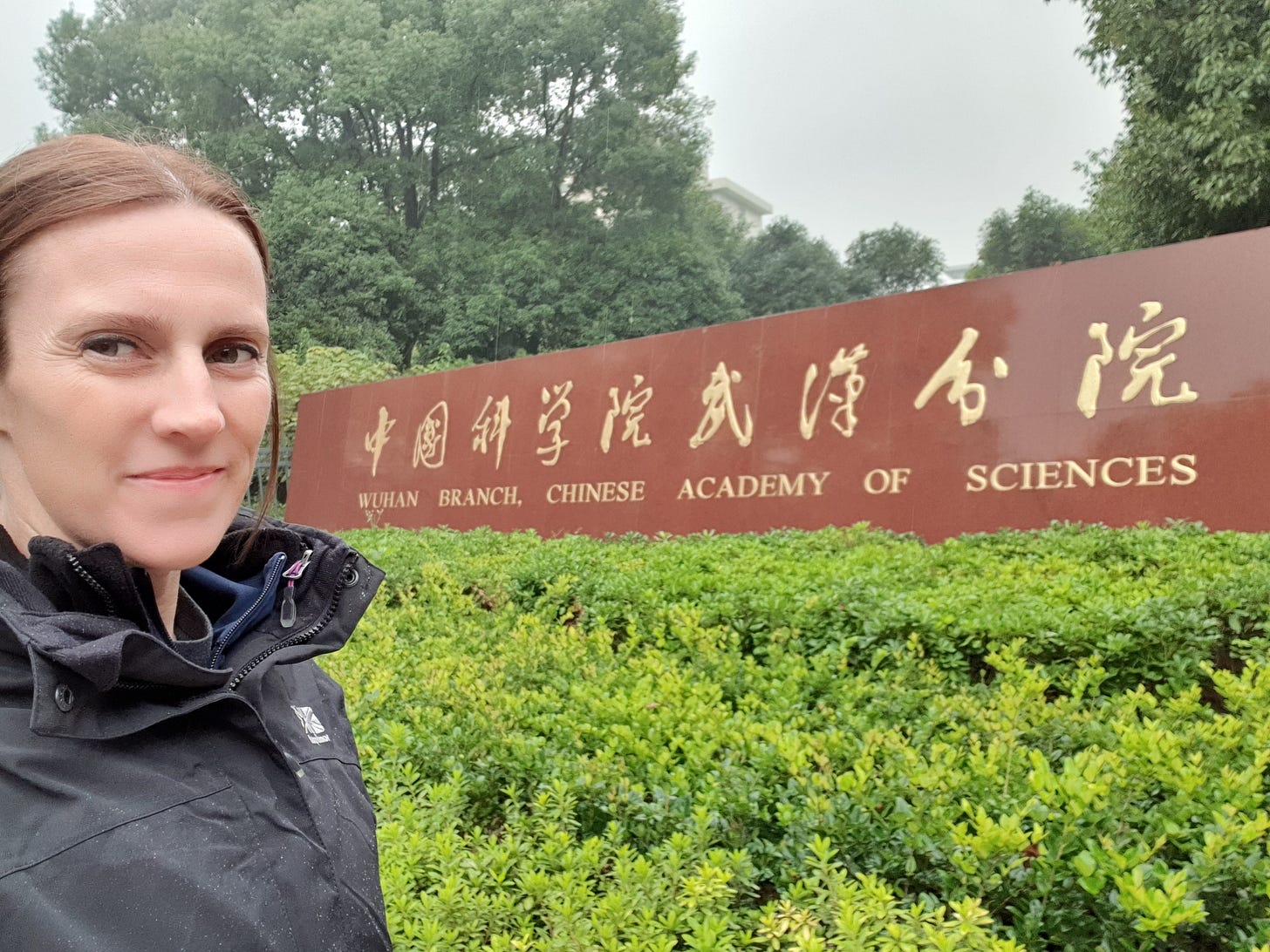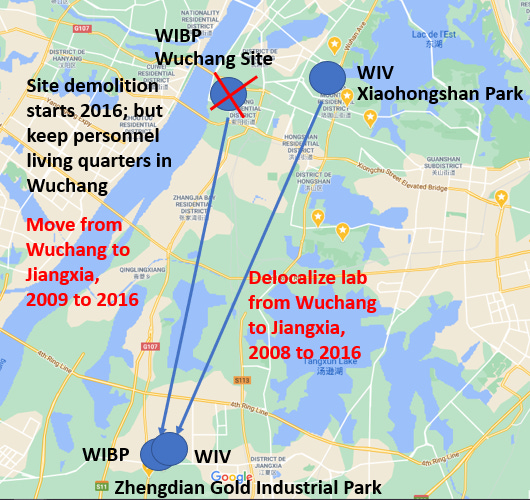Lets be blunt: SARS2 leaked from the BSL4
Because two cell phones from the DARPA Defuse project were crawling around it
When you clip a digital coupon at the grocery store or open your weather app for a rain forecast, you are broadcasting your location to the marketing and hedge fund world. Your whereabouts are packaged and sold for an American buck to the highest bidder. Why? So advertisers can sell you more stuff and hedge funds can short oil prices. This murky private industry tracks everyone: Pentagon employees, US military outposts, US Presidents, and even murderers.
One search turned up more than a dozen people visiting the Playboy Mansion, some overnight. Without much effort we spotted visitors to the estates of Johnny Depp, Tiger Woods and Arnold Schwarzenegger, connecting the devices’ owners to the residences indefinitely…
In most cases, ascertaining a home location and an office location was enough to identify a person. Consider your daily commute: Would any other smartphone travel directly between your house and your office every day?
In early 2020, NBC News received a report that analyzed cell phone data around the Wuhan BSL4. This intel was apparently a US Government contractor, Sierra Nevada, based in Nevada, who specialized in geo tracking, but did not produce the report “in coordination with the DoD.”
The Defense Counterintelligence Security Agency, part of the Defense Department, confirmed it signed a contract with Sierra Nevada in 2020 in an effort “to better analyze publicly available data and government information to identify cyber threats to cleared contractors.”
Because the Wuhan lab was a high-security facility studying dangerous pathogens, it was a collection target for U.S. intelligence agencies. Data gathered would include mobile phone signals, communications intercepts, and overhead satellite imagery.
In late 2019, two “devices of interest” were commuting between Singapore and Wuhan during an interesting time. These two Singapore cell phone numbers were from Duke-NUS. One belongs to Dr Danielle Anderson, and the other to her boss: Dr Linfa Wang.

Linfa was the boss of Dani, and since 2007, he has been the chairman of a scientific advisory board at the Wuhan Institute of Virology. He would have vouched for Dani in the new BSL4. “Only a handful of the WIV’s 300 scientists had been trained to use the BSL4, including Shi Zhengli, the deputy director.” However, Shi hosted conferences and traveled to Sweden, Africa, and Paris in late 2019. Shi’s BSL2 lab was also closer to downtown Wuhan, so this basically meant Dani had the remote BSL4 all to herself.
Dani’s phone shows she was a frequent flyer to Kenya, where Duke has a hospital. In 2019, she co-published a paper on Kenyan camels. That same year, she traveled to Beijing and published a CRISPR paper on bat research performed in a BSL3 at the China CDC in Beijing.
Dani later told CNN she planned to return to Wuhan in “early 2020,” which could explain her phone being in Wuhan from January to March 2020.
On June 28, 2019, Dani flew from Beijing to her second home: Wuhan. This was the same “application date” for NIAID’s $82M CREID grant, which was open for bidding in 2019. By her own admission, Dani was a part-time member of the WIV BSL4 staff. Her Australian passport was full of Chinese stamps, and she “began collaborating with Wuhan researchers in 2016.”
According to Dani’s cell phone, she was inside the Wuhan BSL4 from July to October 2019, and between October 6 and 11, there was allegedly a “hazardous event.” This exact same week, a WIV teleconference was held, which included the major participants of the DARPA Defuse proposal: Linfa, Peter Daszak of EcoHealth, and Ralph Baric of UNC.
Linda Saif of Ohio State University (above) was not listed on any R01 NIAID grants, but she helped Baric cover up an engineered origin. He responded, “Thank you for your efforts.” During the pandemic, Baric published a SADS paper, which was also listed in Defuse. SADS was a bat coronavirus that infected Chinese (and American) pigs since “pork & poultry biosecurity was both US and China national security.”
The limited BSL4 cell phone activity had dropped to zero in the surrounding area. The “suspicious visit” to the BSL4 on November 26-28th was Linfa’s Singapore iPhone (per email above).
By December, SARS2 was already circulating in northern Italy, France, Norwegian pregnant women, the American West Coast, and US blood donors. The valid criticism of the cell phone report was based on the small number of devices, less than a dozen. However, two of those few devices are listed in the 2018 DARPA Defuse grant.
Dani had this security photo taken inside the BSL4 on her last day, November 29th, but she never fully explained why she left Wuhan.
She was a full-time bat immunologist who made a living studying live bats. Wherever she traveled, live bats followed, even with NBC news cameras in tow.
When Dani was later asked about a ‘secret’ bat colony in the BSL4, she said there are many labs working with bats and have bat colonies in multiple countries. “To my knowledge, that was a video made several years ago to promote the lab. There are scientific meetings dedicated specifically to bat virus research, and the last such meeting that I attended was in Colorado, USA.” This was true, but she never denied the live Wuhan bat colony or her Duke-NUS role in DARPA Defuse to test vaccines on “wild-caught captive” Chinese horseshoe bats.
NIH and CSU recently started a $6.7M live bat research facility with the same Chinese bat species, presumably so they don’t have to test their bat vaccines on foreign soil.
While rushing to the defense of her WIV colleagues, Dani admitted in a March 2020 Facebook fact-check post that “I have worked in this exact (BSL4) laboratory at various times for the past two years.” Much was made about China’s coronavirus research occurring in Shi’s BSL2, but only simpletons believe that was the SARS2 source. Much was made about the Chinese lying, but Dani was the only one lying in Wuhan. The only person ever arrested for a potential lab leak was posting videos of the mysterious BSL4.
Dani later claimed her phone was being tracked and deleted her jogging app. “I’m a runner and on one of the apps I use, Strava, it shows where your running route [is], so you can watch someone and figure out where they live, so I had to lock down my Strava.”
We know where Dani lived in late 2019 because she told us. She rode the commuter bus to the BSL4 facility along with her dormitory colleagues. This was an epicenter for the SARS2 outbreak, based on social media data.
She was part of a group that gathered each morning at the Chinese Academy of Sciences to catch a bus that shuttled them to the (BSL4 lab) about 20 miles away. As the sole foreigner, Dani stood out, and she said the other researchers there looked out for her. “We went to dinners together, lunches, we saw each other outside of the lab,” she said.
Based on Weibo, China’s equivalent of Twitter, this exact tiny hotspot of dorms was within the larger Wuchang district hotspot for early SARS2 transmission.
Dani was later appointed to the Lancet Covid origins commission on Nov 23, 2020: “As a virologist who has worked in high-biosecurity containment labs worldwide, I look forward to bringing my experience and expertise to bear in the search for answers.”
She allegedly said very little during the meetings, but after the commission was dissolved, she had a lot to say. She called anyone “Alex Jones” who questioned their natural origins narrative. The rejected group of virologists went on to publish their own findings. Dani summarized that “our paper recognizes that there are different possible origins, but the evidence towards zoonosis is overwhelming.”




















